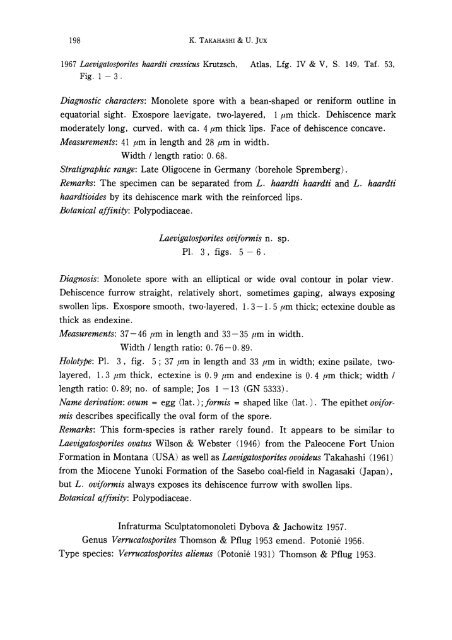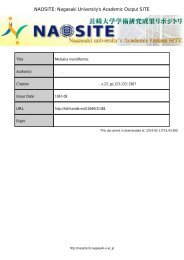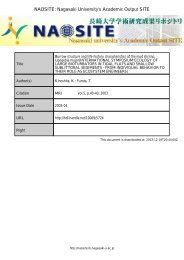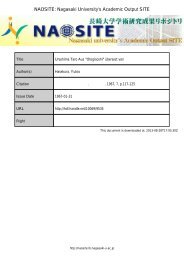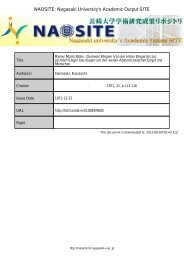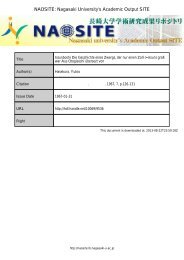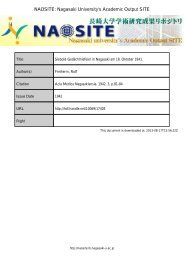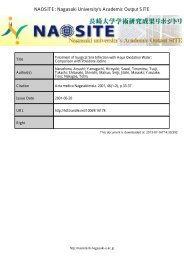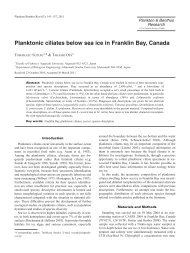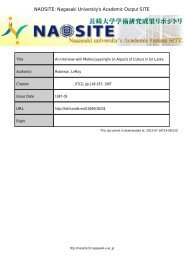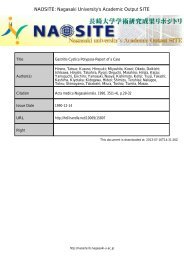Palynology of Middle Tertiary lacustrine deposits
Palynology of Middle Tertiary lacustrine deposits
Palynology of Middle Tertiary lacustrine deposits
Create successful ePaper yourself
Turn your PDF publications into a flip-book with our unique Google optimized e-Paper software.
198 K. TAKAHASHI & U. lux<br />
1967 Laevigatosporites haardti crassicus Krutzsch, Atlas, Lfg. IV & V, S. 149, Taf. 53,<br />
Fig. 1 - 3 .<br />
Diagnostic characters: Monolete spore with a bean-shaped or reniform outline in<br />
equatorial sight. Exospore laevigate, two-layered,<br />
1 pm thick. Dehiscence mark<br />
moderately long, curved, with ca. 4 pm thick lips. Face <strong>of</strong> dehiscence concave.<br />
Measurements: 41 pm in length and 28 pm in width.<br />
Width / length ratio: 0.68.<br />
Stratigraphic range: Late Oligocene in Germany (borehole Spremberg).<br />
Remarks: The specimen can be separated from L. haardti haardti and L. haardti<br />
haardtioides by its dehiscence mark with the reinforced lips.<br />
Botanical affinity: Polypodiaceae.<br />
Laevigatosporites oviformis n. sp.<br />
PI. 3, figs. 5 - 6 .<br />
Diagnosis: Monolete spore with an elliptical or wide oval contour in polar view.<br />
Dehiscence furrow straight, relatively short, sometimes gaping, always exposing<br />
swollen lips. Exospore smooth, two-layered, 1. 3-1. 5 pm thick; ectexine double as<br />
thick as endexine.<br />
Measurements: 37 - 46 ,urn in length and 33 - 35 ,urn in width.<br />
Width / length ratio: 0.76-0.89.<br />
Holotype: PI. 3, fig. 5; 37 pm in length and 33 pm in width; exine psilate, twolayered,<br />
1.3 pm thick, ectexine is 0.9 pm and endexine is 0.4 ,urn thick; width /<br />
length ratio: 0.89; no. <strong>of</strong> sample; Jos 1 -13 (GN 5333).<br />
Name derivation: ovum = egg (lat. ) ; formis = shaped like (lat.). The epithet oviformis<br />
describes specifically the oval form <strong>of</strong> the spore.<br />
Remarks: This form-species is rather rarely found. It appears to be similar to<br />
Laevigatosporites ovatus Wilson & Webster (1946) from the Paleocene Fort Union<br />
Formation in Montana (USA) as well as Laevigatosporites ovoideus Takahashi (1961)<br />
from the Miocene Yunoki Formation <strong>of</strong> the Sasebo coal-field in Nagasaki (Japan),<br />
but L. oviformis always exposes its dehiscence furrow with swollen lips.<br />
Botanical affinity: Polypodiaceae.<br />
Infraturma Sculptatomonoleti Dybova & Jachowitz 1957.<br />
Genus Verrucatosporites Thomson & Pflug 1953 emend. Potonie 1956.<br />
Type species: Verrucatosporites alienus (Potonie 1931) Thomson & Pflug 1953.


